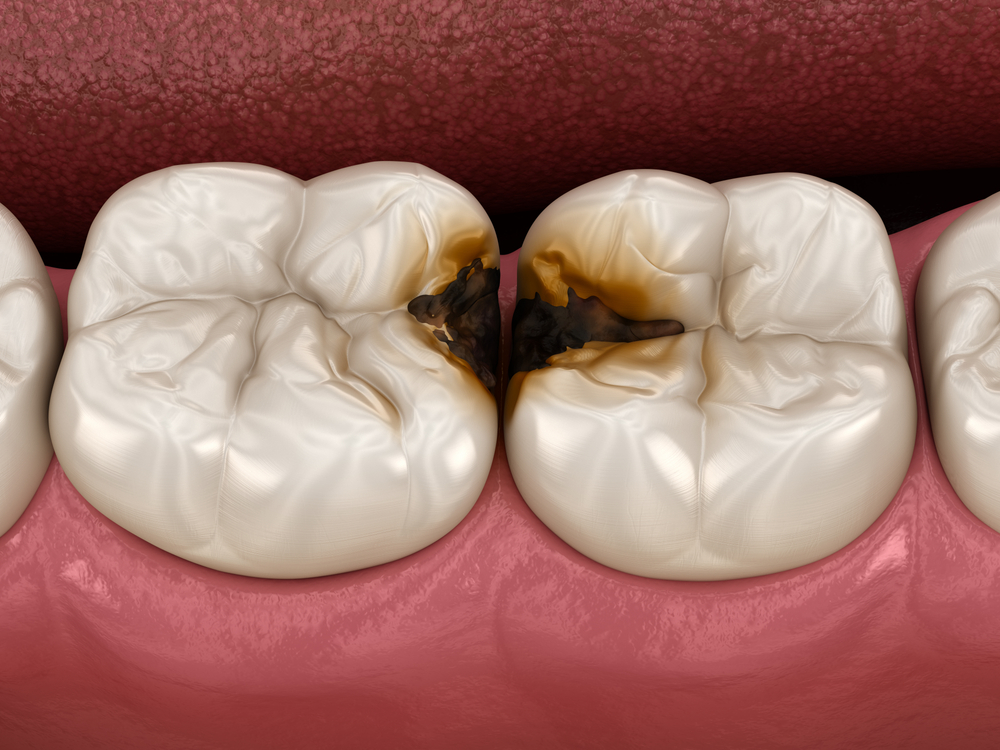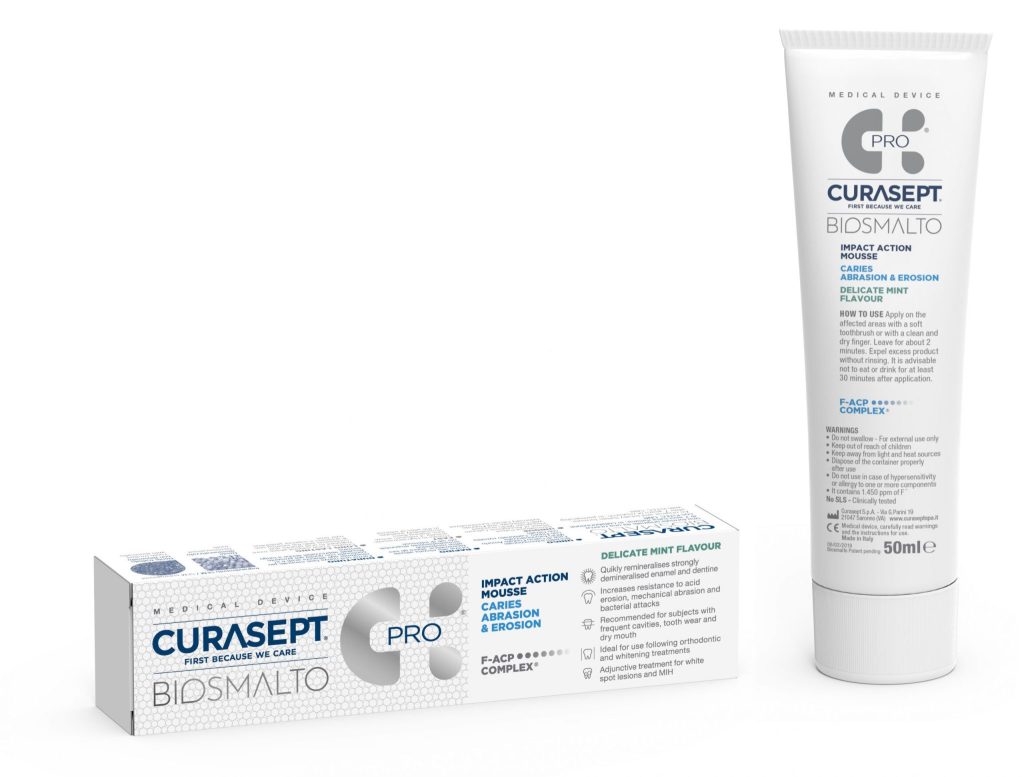The complex nature of caries prevention
Featured Products Promotional FeaturesPosted by: Dental Design 23rd July 2022

There are many factors that may contribute to the development of dental caries, many of which patients can influence with positive oral hygiene behaviours. The greatest challenge for the dental team is often educating patients to the point where they genuinely appreciate the importance of preventing caries, as well as understand the role they play every day. However, this is easier said than done, because the risk factors can be complex.
The current landscape
In the UK, nearly a third of adults have tooth decay,[i] which is commonly caused by inadequate oral hygiene, as well as a diet high in sugar.[ii] The story is little better for children. In 2017, almost a quarter of 5-year-olds had tooth decay.
The good news is that prevention can be simple for many individuals – regular removal of bacterial plaque from the teeth and gums through recommended brushing and interdental cleaning is all it takes. The not-so-good news is that the message surrounding oral health, how to maintain it and its impact on general wellbeing, still needs to be louder among the population. What’s more, the solution is not always as simple as encouraging patients to brush better.
 Complicated relationships
Complicated relationships
Unfortunately, there are many other factors at play which the dental team have less direct control over. Several sources demonstrate significant inequalities in oral health across the nation for people, which include imbalances in access to and utilisation of dental health support for those of varying age, gender, location and socio-economic status.[iii] Oral health of those in the latter group was most often linked to availability of dental services, as well as smoking habits and alcohol consumption.
Even when deprivation was considered, a study by Public Health England in 2019[iv] found an association between children’s weight and their risk of dental caries – finding those who were overweight more likely to experience tooth decay. There was also a suggestion that children who were seriously underweight may have a higher risk of caries too.
Other systemic health conditions that could affect caries risk include diabetes. One paper postulated that children with type 1 diabetes may be at a higher risk of caries than those without, given their experience with dry mouth and salivary dysfunction.[v] This is supported by similar findings in diabetic adults, especially those with poorer glycaemic control.[vi]
Plus, it’s important remind patients that it works the other way around too. Advanced dental caries has been linked with an increased risk of cardiovascular disease, particularly in among middled-aged cohorts.[vii]
Getting the message across
Of course this is all far too much to discuss with a patient in a single appointment. The dental team therefore has to consider how to convey the information in the most effective way. This should be done on an individual basis, taking into account each patient’s specific situation, their education level, their priorities and their health status.
 When describing dental disease or the proposed treatment, it is essential to use simple language. This can be a very daunting experience for many patients and not understanding or misinterpreting the conversation could lead to distrust and very little action on their part. In general, it can be helpful to talk about the bigger picture too – if they appreciate that oral health is about much more that whether they keep their teeth, they might be more motivated to improve their at-home routines.
When describing dental disease or the proposed treatment, it is essential to use simple language. This can be a very daunting experience for many patients and not understanding or misinterpreting the conversation could lead to distrust and very little action on their part. In general, it can be helpful to talk about the bigger picture too – if they appreciate that oral health is about much more that whether they keep their teeth, they might be more motivated to improve their at-home routines.
Communication can often be supplemented with visual aids such as images or animations, which may convey the development of caries better than words. This is especially useful when engaging with children and young people.
It is equally as important to recommend products that patients find easy to implement and that you trust to effectively manage issues and deliver adequate protection for the future. Take the Curasept Biosmalto Impact Action Mousse, available through J&S Davis in the UK. This provides rapid remineralisation to protect patients’ teeth from caries, as well as from acid attacks, mechanical abrasion, dry mouth, white spots, fluorosis and sensitivity. It’s SLS-free, easy to apply and vegan, making it ideal for all patients who would benefit from its innovative remineralisation features.
Start simple
The topic of dental caries may be a complex one to discuss with patients, but giving them relevant information in a way they are most likely to understand will help to encourage their participation in oral hygiene maintenance. Start with simple explanations and reliable products, building detail each time a patient returns to refresh and expand their knowledge for the best long-term results.
For more information on the industry-leading products available from J&S Davis, visit www.js-davis.co.uk, call 01438 747 344 or email jsdsales@js-davis.co.uk
[i] Oral health Foundation. Oral health statistics in the UK. https://www.dentalhealth.org/oral-health-statistics [Accessed May 2022]
[ii] NHS. Tooth decay. https://www.nhs.uk/conditions/tooth-decay/ [Accessed May 2022]
[iii] Gov.uk. Inequalities in oral health in England: summary. March 2021. https://www.gov.uk/government/publications/inequalities-in-oral-health-in-england/inequalities-in-oral-health-in-england-summary#:~:text=The%20relative%20inequalities%20in%20the,geographies%20and%20different%20social%20groups. [Accessed May 2022]
[iv] Public Health England. The relationship between caries and body mass index. Child level analysis. November 2019. https://assets.publishing.service.gov.uk/government/uploads/system/uploads/attachment_data/file/844121/BMI_dental_caries.pdf [Accessed May 2022]
[v] Ferizi L, Dragidella F, Spahiu L, Begzati A, Kotori V. The Influence of Type 1 Diabetes Mellitus on Dental Caries and Salivary Composition. Int J Dent. 2018;2018:5780916. Published 2018 Oct 2. doi:10.1155/2018/5780916
[vi] Schmolinsky, J., Kocher, T., Rathmann, W. et al. Diabetes status affects long-term changes in coronal caries – The SHIP Study. Sci Rep 9, 15685 (2019). https://doi.org/10.1038/s41598-019-51086-z
[vii] Kim, K., Choi, S., Chang, J. et al. Severity of dental caries and risk of coronary heart disease in middle-aged men and women: a population-based cohort study of Korean adults, 2002–2013. Sci Rep 9, 10491 (2019). https://doi.org/10.1038/s41598-019-47029-3








